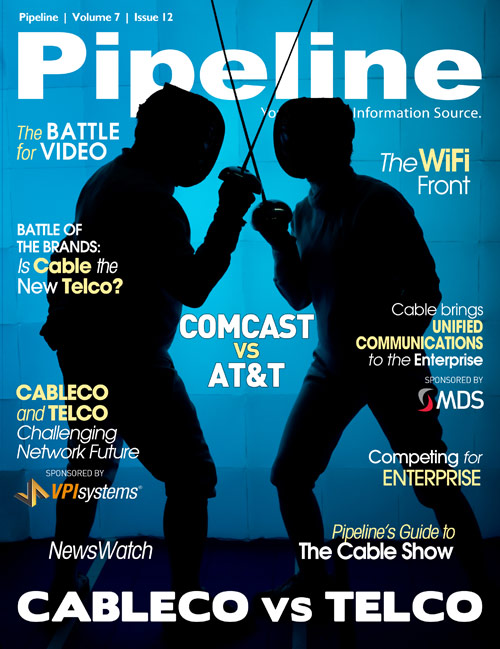Telco v Cable in Fixed Wireless
By: Ed Finegold

Internet cafes were novel a decade ago. Now, it's tough to imagine a cafe that doesn't have free WiFi access. Sure, you'll find a few WiFi-free hangouts that cater to esoteric luddites, spinning vinyl records amongst shelves of dog eared books, with dusty gas lamps and buggy whips for decor. But for the most part, we expect WiFi with our half-caf soy lattes. WiFi plays a key, bridging role in mobility; a WiFi hotspot can give us freedom to consume higher speed data without fear of overage in a world of capped mobile data plans. And now subscription mobility allows us to tap into our TV content with an app and WiFi. The WiFi front is a battleground for cable operators and telcos as they work to meet consumer demand for unshackled access to entertainment on any device. But who's winning, and how do we decide?
Rating the Players
One way to measure leadership in WiFi is by the scope and breadth of an operator's footprint; we can measure how many hotspots they have and how much turf they cover. To keep things simple, we'll examine two telcos and two cable operators; AT&T, Verizon, Comcast, and Cablevision. We'll also look at a handful of markets that can tell us something about each operator's strategy and market reach. Those include New York City; Metro New Jersey (just west of Manhattan across the Hudson River); Chicago (because three of the four operate there); Peoria, Illinois (following the old political polling adage "if it plays in Peoria"); and Dayton, Ohio (because Ohio is so often considered representative of America's heartland).

We'll adjust for the fact that cable operators are regional in nature, not national, to adjust for geographic bias. They just don't have WiFi hotspots outside of their cable footprint, whereas telcos are national entities. That said, our research shows that even within their home markets, some of which are major cities, cable operators can be a bit slow on the WiFi uptake.
A second criteria we'll use to measure WiFi leadership is creativity at the customer interface. We can look at this in two ways; first, how aggressive is the operator in regards to subscription mobility. Subscription mobility is the model where a subscriber can access his or her content services from any access point, including a WiFi hotspot.
"The Tier 1 cable operators that we serve, all of them are actively engaged in trying to get subscription mobility out there," says Scott Ortiz, Director of Product Management for CSG Systems, which has been a major provider of billing and customer management services to the cable industry for 25 years and whose solutions reach more than half of all U.S.
households. We will also look at how well these operators are using the moment of eyeball capture - such as at the WiFi login or terms of use acceptance page - to offer value-added services.
AT&T's Monstrous Footprint
When we measure by total hotspots and geographic range, AT&T is the WiFi champ in the United States. According to the company, AT&T has more than 24,000 public WiFi hotspots across the U.S. Many are free, and all are open to AT&T customers with certain smart phone, broadband, and laptop-connect data plans.
AT&T distances itself from the competition largely because of its strategic partnerships where its WiFi services are offered free to anyone. Its relationships with McDonald's, Starbucks, FedEx Office, and Marriott give it a nearly ubiquitous presence throughout the U.S. There are more 700 AT&T WiFi hotspots in Chicago; more than 460 in New York City; more than 60 in Metro New Jersey; 27 in Dayton, Ohio; and 18 in Peoria, IL. The vast majority of these are free hotspots in Starbucks and McDonalds locations. And, despite the fact that Montpelier, Vermont is the only U.S. state capitol without a McDonalds, there is an AT&T public WiFi hotspot in the heart of its downtown area. AT&T's strategic approach to WiFi is unparalleled by any other provider and would be tough to match given the overwhelming, combined presence of Starbucks and McDonalds locations alone.
In regards to subscription mobility, AT&T supports auto-authentication for its smart phone customers within all of its hotspots, including those that are not free to all. Its smart phones will also handoff seamlessly, according to the company, across its mobile networks and WiFi hotspots without a user prompt. This makes the AT&T WiFi footprint an extension of its national mobile presence, and creates a strong value proposition, especially in light of the company's move to capped data plans.




